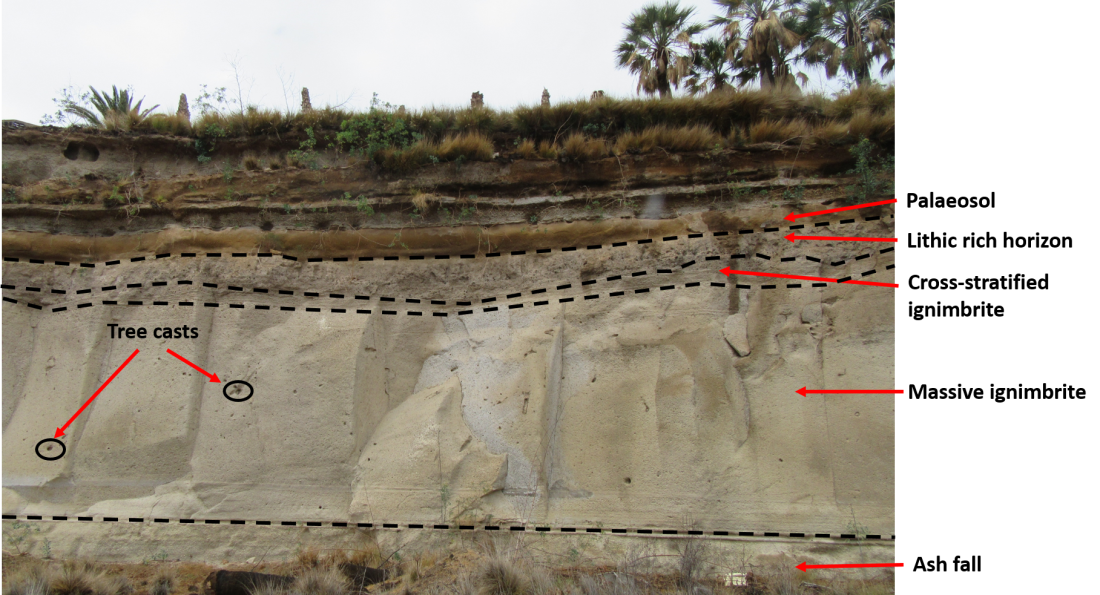We woke up on day 5 to torrential rain and reports of snow up in the caldera and on Teide! Since the day was supposed to be spent in river valleys liable to flooding, we abandoned the field for the morning (much to the delight of the students). After lunch, the weather cleared out a little, and we headed off to a backup locality near the town of Guimar with a large exposure of the Poris ignimbrite, erupted at 273 ka from the Las Canadas stratovolcano. This showed a range of depositional features including ash fall, massive ignimbrite with tree casts, cross stratified ignimbrite and a lithic rich upper layer, all topped by a paleosol. This sequence can be interpreted as 1: initial fallout from a Plinian eruption column. 2: Collapse of the eruption column produces pyroclastic density currents, which rip up trees on the slopes of the volcano and carry them seaward. 3: As the current wanes and becomes more dilute, cross stratified deposits form. 4: Possible caldera collapse ejects lithics in a final, clast-rich pyroclastic density current. 5: A hiatus between eruptive products reaching this location allows a palaeosol (soil horizon) to develop.


Later in the afternoon, we took the students to the coastal exposures of San Miguel de Tajao, which show a fantastic sequence through several Plinian eruptions from the Las Canadas stratovolcano. The students were given time to analyse and log the deposits before coming to an interpretation as to how many eruptions were represented. The outcrops here provide a particularly good example of how topography affects deposition from a pyroclastic flow – some units appear in topographic lows in one section of the exposure yet are not found 20 metres away where a topographic high existed at the time of deposition. Another explanation for any “missing” units in the sequence is that they simply flowed further into the sea, or have been completely eroded away by a subsequent pyroclastic density current.

The final day saw the students completing their independent assessment at Caldera del Rey, a maar volcano (produced by phreatomagmatic eruptions, similar to Montana Pelada from day 3) in the south of the island. Following this, we organized an evening quiz by the hotel pool, where the demonstrating team successfully fooled the students in the “secrets of the staff” round, and “Ignim-not-so-brite” won the award for best team name.

